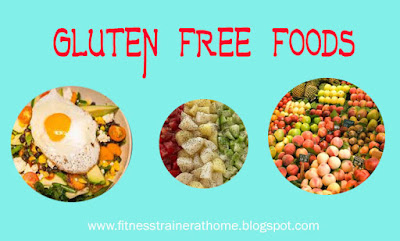GLUTEN FREE DIET
Unlike most other diets, gluten
free diet is usually not prescribed as part of any weight loss program.
Instead, it is advised more as a treatment linked restriction, especially for
those suffering from the medical condition called celiac disease, also called
gluten-sensitive enteropathy or non-tropical sprue. In such people, gluten
triggers allergic reactions in their small intestine, invariably kicking up
issues like diarrhoea, abdominal cramps, gas, bloating, vitamin and mineral
deficiencies. Recent studies have also revealed that gluten intolerance is also
responsible for the condition dermatitis herpetiformis, a form of skin
disorder. Drugs are available to cure such illnesses, but as a first step of
the treatment, as a precondition, doctors usually ask the patients to follow a
gluten-free diet all through the treatment term.
That brings the discussion to
its trickiest part – formulating the so-called gluten-free diet. What is the
composition of the gluten-free diet? Well, according to medical experts, for a
celiac patient, ‘gluten-free’ means a diet that contains less than 0.02% gluten
elements in it. In other words, the total amount of gluten present in all the
diet ingredients must be ideally less than 0.02%. Several starch and grain
sources fall in this category of gluten-free food items; rice, potato, maize,
tapioca, millet, lupine, quinoa, Montana, sorghum, yam, sweet potato, and
arrowroot, to name a few. In order to give more balance to the food combination
- in order to include the required amount of protein and dietary fibre - usually
nut flours, soybean and different bean varieties are also included in the
gluten-free diet. The only aspect – the gluten composition should not cross the
0.02% mark.
Equally important in
formulating a gluten free diet plan is avoiding those eatables that have higher
gluten content, such as wheat. ‘Wheat’ has been specifically mentioned because
it has 12% gluten in it, which is nearly 600 times more than the accepted
value. Other items to be avoided include starch, rye, barley, vegetable
proteins, glucose syrup, malt flavouring, barley-brewed beer, and maltodextrin.
Another pitfall to look out for is those packaged foods that contain gluten,
but not mentioned in its label under ingredients since gluten was never
involved in its formulation, but only in its preparation. Also, if you see the
words ‘stabilizer’, ‘emulsifier’, or ‘hydrolyzed plant protein’ on any food
labels, assume that the packaged food item has at least a grain containing
gluten. Such items should be shunned without any second thoughts.
To know more about gluten-free
diets, search the web. It is also advisable to consult your doctor/nutritionist
for they could give you a detailed input on gluten contents of different food
items, what to have, and what to avoid. Understanding the illness and its
nature helps one to respond to the treatments better.
Tail Piece: Apart from the
diseases mentioned in the article, some researchers also believe that gluten
free diets could do wonders for people suffering from multiple sclerosis, ADHD,
autism spectrum disorders, and certain behavioural problems.






0 Comments
Please do not enter any spam link in the comment.